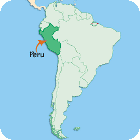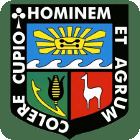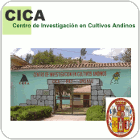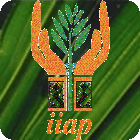Plant breeding programs in Peru
 Peru is a large country in western South America, but only 3.2% of the area is under crops. Andean agriculture is largely for subsistence and Peru is a net importer of several agricultural commodities. Agriculture contributes about 13% to GDP and employs about 30% of the workforce. Main crops are rice, maize, potato and sugarcane.
Peru is a large country in western South America, but only 3.2% of the area is under crops. Andean agriculture is largely for subsistence and Peru is a net importer of several agricultural commodities. Agriculture contributes about 13% to GDP and employs about 30% of the workforce. Main crops are rice, maize, potato and sugarcane.
In the last decades, a considerable effort in plant breeding has been made in Peru. This country has many institutions with potential to engage in plant breeding. Nevertheless most of the active programmes are carried out at two institutes: the Universidad Nacional Agraria La Molina (UNALM), and the Instituto Nacional de Investigaciòn Agraria (INIA). The private sector is only represented by farmer associations or Research Institutes financed by private farmers.
Peru is an extremely diverse country – culturally and ecologically -- and has a huge biodiversity. That has many consequences in the strategies, plans, and impacts of the plant breeding activities, because many varieties are required to cover the ecological diversity, using all the biological diversity to fix complexes and diverse markets limited by cultural and different forms of utilization. Main crops covered by Peruvian plant breeding programmes are maize, potato, wheat, quinoa and cotton.
Because of the country’s eco-geographical diversity, the adaptation of improved varieties is generally limited to a relatively small area. In turn the government does not give a very high priority to research in plant breeding. The lack of support of the international community is seen to be the most limiting factor of the success of Peruvian breeding programmes. The inadequate number of breeders is also a major issue.
Research and education institutes with activities in plant breeding
Public Institutes
 |
National Agricultural Research Institute - Instituto Nacional de Investigación Agraria (INIA)
|
 |
National University of Agriculture La Molina - Universidad Nacional Agraria La Molina (UNALM)
|
 |
Research Centre of Andean Crops - Centro de Investigación en Cultivos Andinos (CICA), Universidad Nacional San Antonio Abad del Cusco
|
 |
Peruvian Amazon Research Institute – Instituto de Investigaciones de la Amazonía Peruana (IIAP)
|
Private Institutes
 |
Peruvian Institute of Cotton - Instituto Peruano del Algodon (IPA)
|
 |
Foundation for Cotton Development - Fundacion para el Desarrollo Algodonero (FUNDEAL)
|
 |
Farmer’s Association of Ica - Asociacion de Agricultores de Ica
|
______________________________________
Information by Ricardo Sevilla Panizo (2008) - Information based on the Peru's full report from the PBBC survey.
Last revised 26-03-2010, GIPB.
